Japanese New Year, called 正月 (Shougatsu), is most important annual event in Japan with many significant traditions attached to it. Learn the importance of the Japanese New Year and how it is celebrated.
Table of Contents
- What is 正月 (Shougatsu)?
- Preparing for the Japanese New Year
- Japanese New Year Decorations and Their Importance
- How to Celebrate the Japanese New Year
- Japanese New Year Foods
What is 正月 (Shougatsu)?
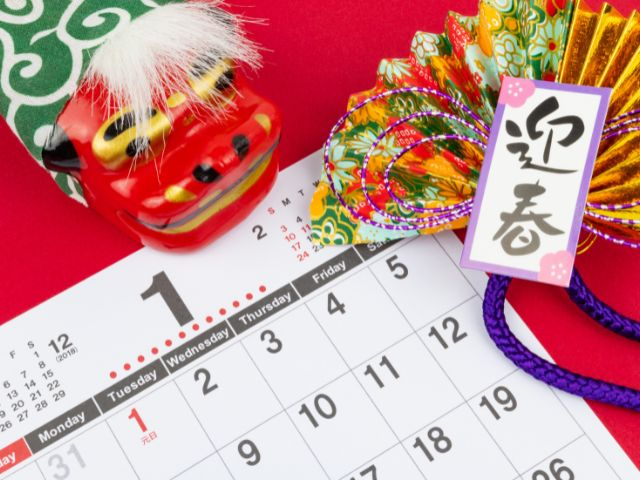
正月 (Shougatsu) means “New Year”, specifically the Japanese New Year. Originally, 正月 (Shougatsu) is also another word for the first month of the year, aka January or 一月 (Ichigatsu), and was considered a month to welcome the new year. Nowadays however, only the period within the month for celebrating New Year’s events is called 正月 (Shougatsu), or お正月 (O-Shougatsu).
The first 3 days of the Japanese New Year are the most important. Called 三が日 (Sanganichi), it refers to January 1st to the 3rd. Many Japanese businesses close from December 29th to January 3rd for a period known as 年末年始 (Nenmatsu Nenshi), or “Year-End New Year”. During this period, many people return to their hometowns to spend time with their families for the New Year holidays.
There are also traditions attached to the Year-End New Year which you can see in the post below.
🎉 The end of the year and new year is approaching. 年末年始 (Nenmatsu Nenshi), aka "Year-End New Year" is one of Japan's...
Posted by WeXpats on Tuesday, December 26, 2023
松の内 (Matsunouchi) refers to New Year’s Week, and is the period when New Year’s decorations should be put on display. Though the starting date differs by region, the last day is always January 7th when decorations should be taken down. After the 7th, other New Year traditions will take place.
Traditionally, New Year’s Day was an event to welcome 年神 (Toshigami), the New Year God,to one’s home. The deity, also called 正月さま (Shougatsu-sama) and 歳徳神 (Toshitokujin), is believed to blesses the families of homes visited with good harvest and prosperity. Customs like thoroughly cleaning the house before the New Year and decorating the house with New Year’s decorations are done to welcome the New Year God.
Although these customs are still passed down till today, the purpose of the Japanese New Year is more of an event for families to gather together to celebrate the New Year.
Writer's Pick
Preparing for the Japanese New Year
In Japan, households start to prepare for the New Year from mid to late December. So, how exactly do Japanese families prepare for the New Year?
Spring Cleaning - 大掃除 (Oosouji)
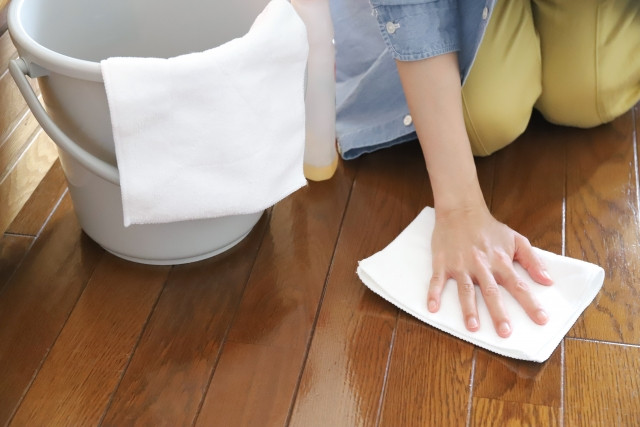
Spring cleaning is done at the end of the year. A deep cleaning of the house is done, including hard to reach places that are not usually touched in day-to-day cleaning. Aside from the benefit of welcoming the new year with a sparkling clean home, year-end spring cleaning also has traditional roots.
The custom of spring cleaning at the end of the year is called 煤払い (Susuharai). The significance of cleaning the house at the end of the year is to purify one’s living place from dirt and misfortune in order to welcome a fresh new year.
Originally, Susuharai was done at Edo Castle on December 13th, but the custom spread to the general public and eventually changed to the year-end spring cleaning we know today. Even today, following the origins, spring cleaning is generally held between December 13th and 28th.
Additionally, since New Year preparations begin with Susuharai, December 13th is also called “正月迎え (Shougatsu Mukae) - Welcoming New Year” and “正月事始め (Shougatsu Koto Hajime) - Start of New Year Matters”.
Sending New Year’s Card - 年賀状 (Nengajou)
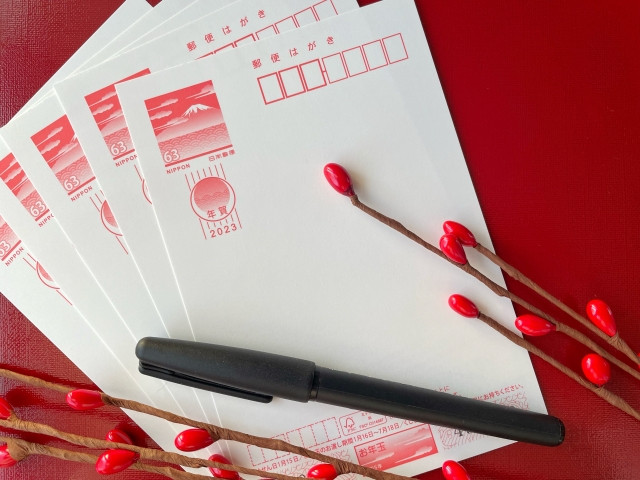
An unceasing tradition in Japan is sending greeting cards to family, friends, and people we are appreciative of to send season’s greetings and wishes. For the New Year, a postcard called 年賀状 (Nengajou) is sent to give New Year greetings and to wish for continued favour with the other party.
Japanese post offices have a special system in place for New Year’s cards. Nengajou posted between December 15th to 25th will arrive at the recipient on New Year’s Day itself. New Year’s postcards are available to buy at stationery shops, lifestyle shops, and post offices in Japan. At time of writing, domestic postage for postcards is 63 Yen, while international postage for postcards is 100 Yen.
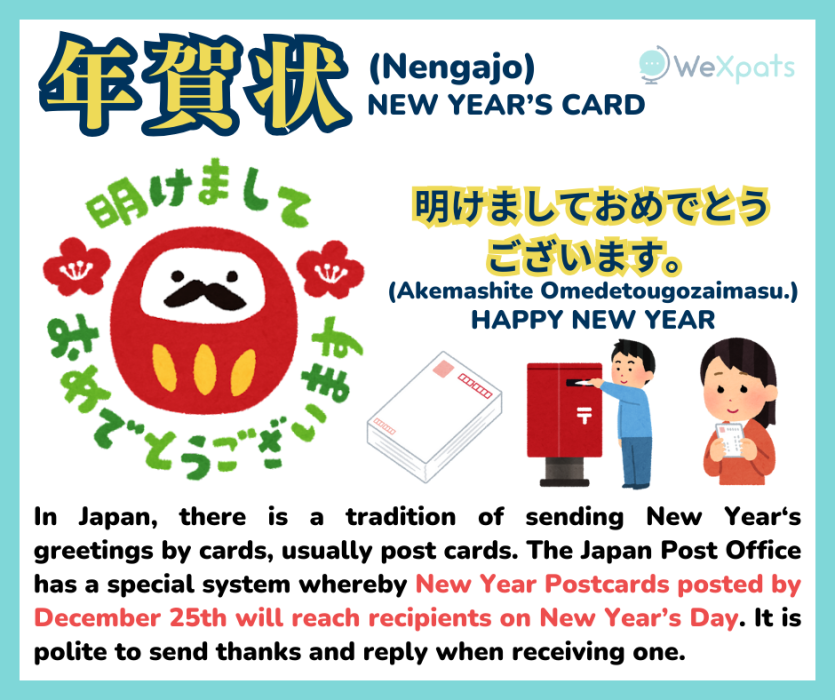
Want to send a Japanese New Year’s Card? Learn how to say Happy New Year in Japanese and more about Nengajo here.
Do note that families who have suffered the loss of a closed one will send out 喪中はがき (Mochuu Hagaki), or “Mourning Postcard”, to notify people in advance that they cannot receive New Year’s greetings as they are still in grieving. If you receive one, make sure not to send a New Year’s card to the family.
Preparing New Year’s Food
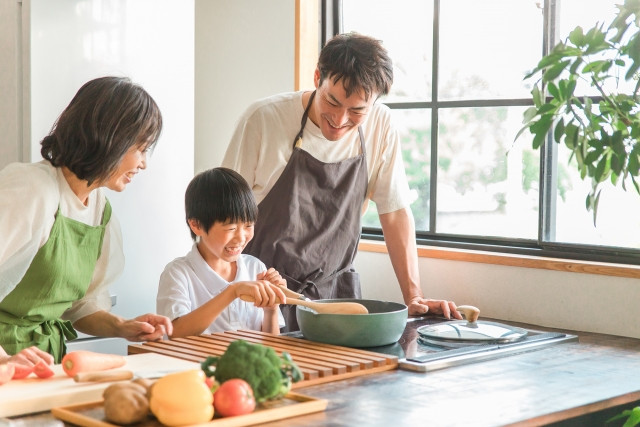
Many shops and even supermarkets will close on the first 3 days of the New Year, therefore many families go grocery shopping or prepare enough food to last those 3 days. Additionally, in olden days, using a knife during the New Year is believed to be bad luck, so a custom of finishing cooking before the New Year developed.
Japanese New Year Decorations and Their Importance
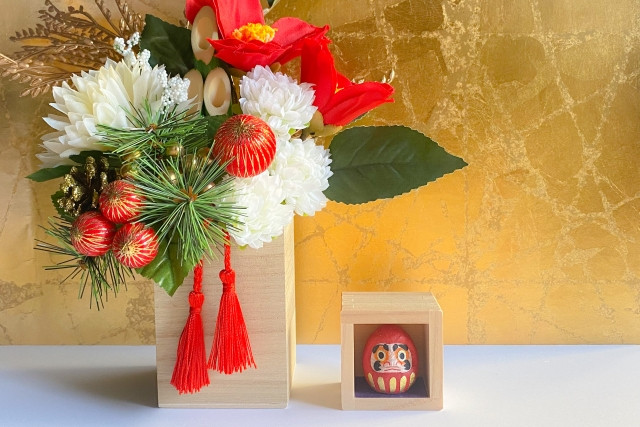
Different Japanese New Year’s decorations carry different meanings and purposes. In addition, where to put them up, inauspicious days to avoid, and when to take them down are also important.
Let’s start with the timing for decorating your home with New Year’s decorations. Many people start displaying Japanese New Year’s decorations from December 13th when preparation for New Year’s starts. However, it is fine to put up decorations anytime up till the New Year’s with the exception of these dates:
- December 29th : 29 can be read as Ni-Jyuu-Ku which is the same reading as 二重苦 meaning “double suffering” and therefore inauspicious
- December 31st : putting the decorations up for only 1 night before the New Year should be avoided as it shows insincerity
Generally, the New Year decorations will be left on display up till January 7th.
Japanese New Year’s Pine Decoration - 門松 (Kadomatsu)
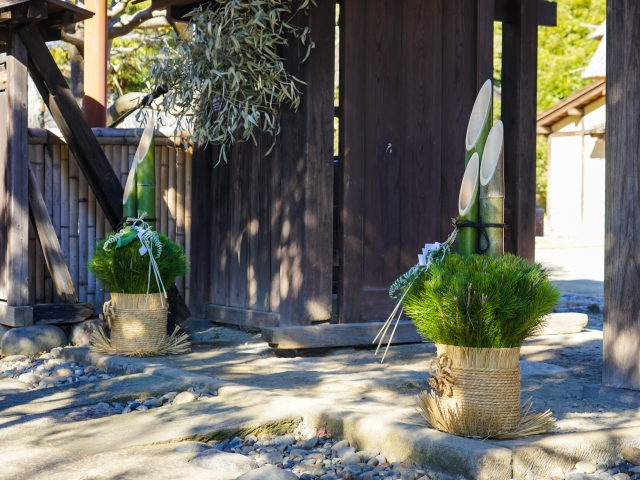
Kadomatsu are pine and bamboo decorations that act as a landmark for the visiting Toshigami (New Year God). They are decorated in pairs in front of one’s home with one on each side of the main door or front gate.
Originally, only pine were displayed, as pine is believed to be a tree that 神 (Kami), or God, dwells in. After the Muromachi period, the symbol of longevity, bamboo, also became part of the New Year’s decoration.
Shimenawa Rope Decoration - しめ飾り(Shimekazari)

Shimekazari are displayed at the front door in high positions, such as under the eaves of the entrance, or on top of the front door. A Shimekazari is made up of a しめ縄 (Shimenawa), or “Sacred Rope”, and other auspicious objects to form a Shimekazari, aka “Shimenawa decoration”.
The purpose of a Shimenawa is similar to a 鳥居 (Torii), a Shinto shrine gate in the form of an archway. It acts as a barrier that separates our world and the divine world. By putting up a Shimenawa, it prevents the “unclean” from entering the house, and creates a sacred area in the house for Toshigami (New Year God) to descend.
Shimekazari decorations come in a variety of styles. Apart from the important sacred rope, other symbolic objects with auspicious meanings form the whole decoration include:
- 紙垂 (Shide) : a paper decoration representing the Kami’s descend
- 裏白 (Urajiro) : a fern leaf with a white underside to represent having nothing to hide or be guilty of
- 橙 (Daidai) : bitter orange(s), as a single tree bears many fruit, it is a prayer or wish of prosperity for “代々 (Daida) - generations and generations”
- 譲葉 (Yuzuriha) - leaves from a false daphne plant that symbolises prosperity of descendants
Mirror Rice Cake - 鏡餅 (Kagami Mochi)
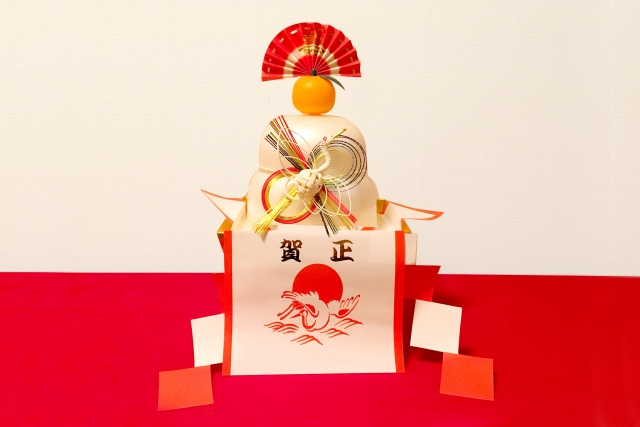
Kagami Mochi can be said to be the most symbolic of Japanese New Year’s decorations. It is a New Year offering to the Toshigami (New Year God) that consists of 2 stacked mochi topped with a bitter orange. The Kagami Mochi also functions as a 依代 (Yorishiro), an object for Kami to occupy, for the New Year God to dwell in.
As the Kagami Mochi is the New Year God’s dwelling when he descends, it is placed in an important part of the house like the living room where the family gathers, the dining room where the family dine, near the front entrance, on the Shinto or Buddhist altar, etc.
Zodiac of the Year Decoration
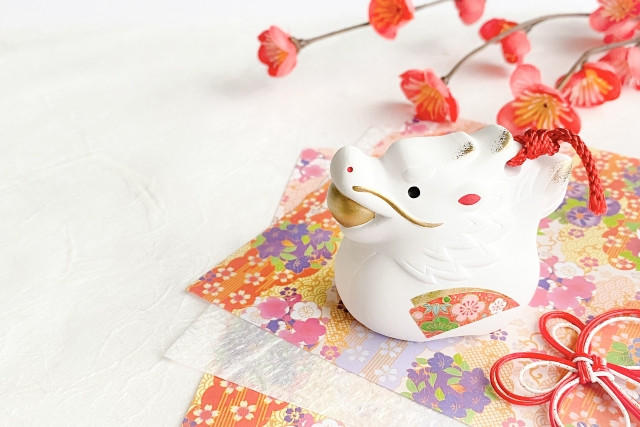
Zodiac of the year figurines are considered good luck charms to protect the whole family. Although it is unrelated to Toshigami (New Year God), there are many people who decorate with zodiacs for reasons such as Feng Shui, receiving one as a gift, or just finding them lovely. Zodiac figurines are usually displayed at the entrance or the living room where people can admire them.
How to Celebrate the Japanese New Year
In Japan, the New Year is usually spent with family and relatives, but sometimes with close friends too. Here is how the Japanese New Year is spent.
New Year’s Eve - 大晦日 (Oomisoka)
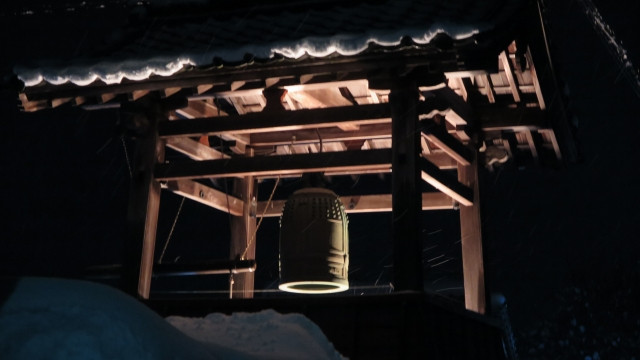
Technically, celebrating the Japanese New Year starts from the night before on New Year’s Eve, called 大晦日 (Oomisoka). Traditions on New Year’s Eve include eating 年越しそば (Toshikoshi Soba) on New Year’s Eve night
Additionally, 除夜の鐘 (Joya no Kane), the custom of the temple bell being run 108 times on New Year’s Eve to purge the 108 worldly desires is also done. It starts at roughly 23:50 PM until the New Year. Many people also choose to gather at the temple or shrine to countdown to the New Year together.
First Sunrise of the Year - 初日の出 (Hatsuhi no De)

Witnessing the first sunrise of the year on January 1st, New Year’s Day has been a long-running tradition. Since ancient times, the first sunrise is considered an auspicious event, symbolising the descent of Toshigami (New Year God). Worshipping the first sunrise of the year carries the meaning of praying for happiness and a good harvest in the new year.
Nowadays, many people go to see the first sunrise as a means to start the new year doing something meaningful, and to express one’s New Year resolution for the year.
First Shrine or Temple Visit of the Year - 初詣 (Hatsumode)
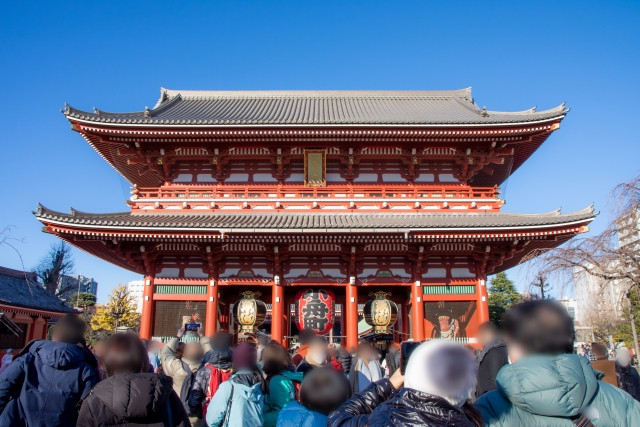
Hatsumode refers to the first shrine or temple visit of the year to pray for good luck, happiness, and good health in the new year. In Japan, many people do Hatsumode in the first 3 days of the New Year when they do not have to work.
The origin of Hatsumode is said to be 年籠り (Toshigomori), a custom where the village head or head of the household would stay at the shrine or temple from New Year’s Eve night till New Year’s Day, praying all night. Originally, the custom of Toshigomori consists of both the New Year’s Eve night’s Joya no Kane (ringing of temple bells for 108 times) and the next day’s “元日詣 (Ganchumoude) - Hatsumode on New Year’s Day”. Nowadays, these are separate events with many people only doing Hatsumode, and not necessarily on New Year’s Day itself.
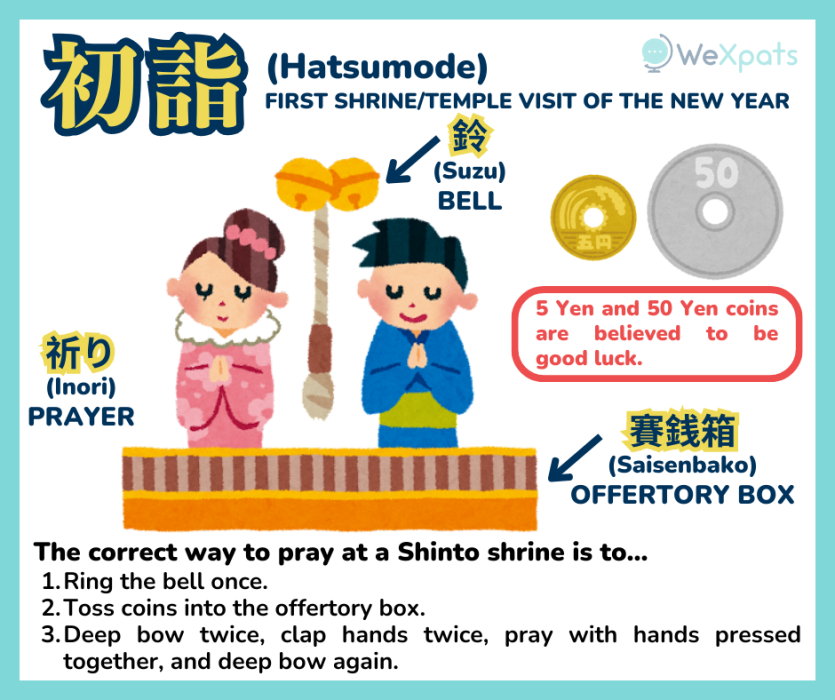
Additionally, during the Edo period, there was also the practice of 恵方詣(Ehoumairi), which is New Year’s visit to a shrine or temple which lies in an auspicious direction that faces the New Year God’s location. Nowadays, people pay no mind to this, and simply visit the most conveniently located shrine or temple near to their home.
Apart from New Year’s prayers, drawing of おみくじ (Omikuji), fortune slips to tell your fortune of the year is done during Hatsumode. People also buy お守り (Omamori), amulets for good luck.
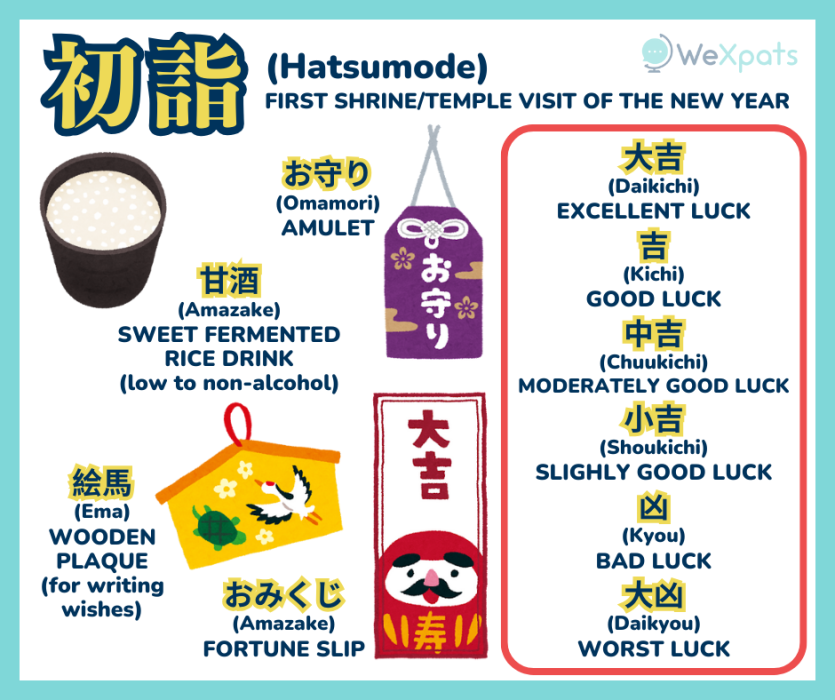
First Calligraphy of the Year - 書き初め (Kakizome)
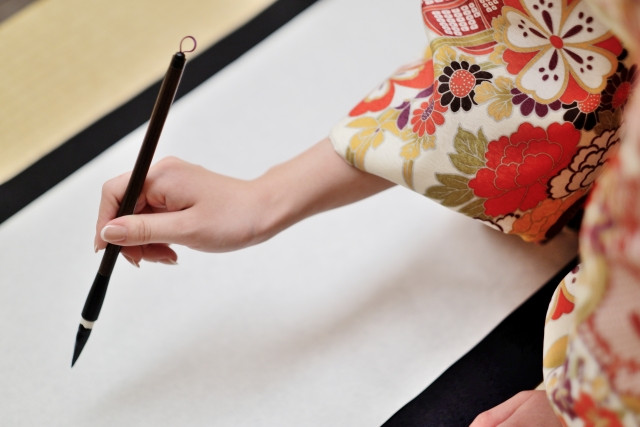
Kakizome, literally translated to “First Writing”, is the first calligraphy of the year that is written on January 2nd. Auspicious words or phrases are usually written, and it carries the calligrapher’s hopes, dreams or goals for the new year. Originally, it was also done as a prayer for good academic and calligraphy skills.
Learn more about 書道 (Shodo), Japanese calligraphy, and how to write it here.
New Year’s Gift - お年玉 (O-Toshidama)

Otoshidama is a New Year’s gift of money that adults (parents, relatives and visitors) give children to celebrate the new year. The money is not just given as it is, but placed inside a decorative paper envelope called ポチ袋 (Pochibukuro). There are many beautiful and cute designs to pick from.
There is no hard rule on who to give Otoshidama to. It is common to give to your own children, relatives’ children, nieces, nephews, and even cousins. There are also no rules on what amount should be given, but usually varies depending on the recipient.
The origins of Otoshidama custom came from the practice of the head of the family sharing Kagami Mochi with other people. As times changed, making your own mochi became uncommon, so people started handing out money instead.
“Breaking the Mirror” - 鏡開き (Kagami Biraki)
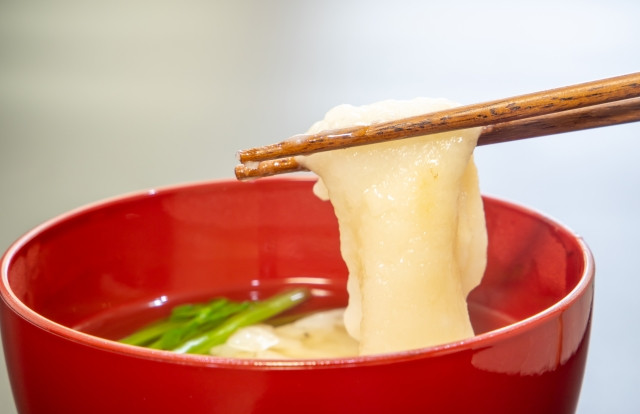
Kagami Biraki is the custom of breaking open the Kagami Mochi. Traditionally, this is done on January 11th, but can vary from place to place. The consensus however is that it should be done after January 7th, the last day of Matsunouchi (New Year’s week).
The Kagami Mochi must be broken up into small pieces with a hammer or even by hand. Cutting it with a sharp object like a knife is inauspicious as it symbolises the “cutting of ties”.
The broken down Kagami Mochi is cooked and consumed. It is commonly made into Senbei (rice crackers), O-Zouni (mochi soup), or Zenzai (red bean mochi soup). It is believed that consuming the Kagami Mochi is good luck and contains blessings from the Toshigami (New Year God) that resided in it.
Little New Year - 小正月 (Koshougatsu)
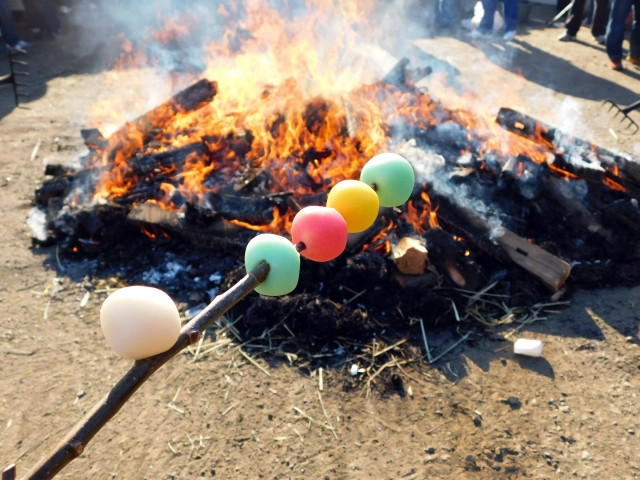
January 15th is the day to conclude New Year festivities, called Koshougatsu. Traditionally, Koshougatsu is held on the 15th day of the 1st month of the Lunar calendar, which coincides with the full moon. The full moon is believed to be auspicious so many events are held on this day. However, after Japan adopted the Gregorian calendar, Koshougatsu became fixed on January 15th, 15 days after the New Year.
Koshougatsu is also known as 女正月 (Onna Shougatsu), or “Women’s New Year”. It is the day wives return to their parents’ home to visit and take a break after working so hard through the New Year.
A classic New Year’s tradition on Koshougatsu is どんと焼き (Dondoyaki) where a bonfire is set-up and New Year’s decorations are burned. Originally, the custom was used to ward off evil spirits, but over time it became a ceremony to send off the Toshigami (New Year God) returning to heaven. After burning the decorations, the bonfire is used to toast mochi.
Japanese New Year Foods

There are many auspicious foods that are associated with the Japanese New Year. Below, we introduce some traditional Japanese New Year’s food there are.
おせち料理 (Osechi Ryouri)
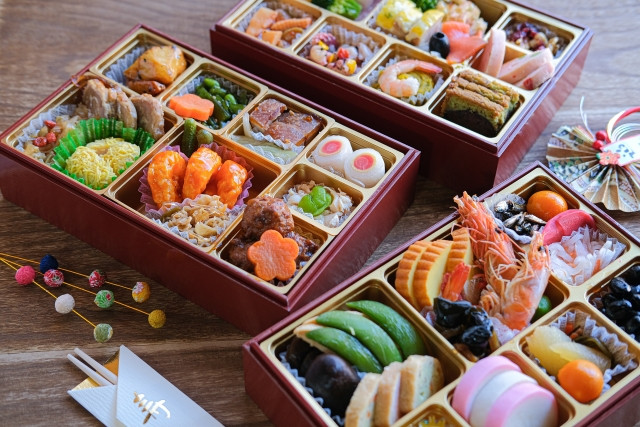
The representative meal for the Japanese New Year. Osechi is not simply a dish, but a full course meal meant to last several days. It is characterised by the combination of many small dishes that have auspicious meanings and is served in a 重箱 (Juubako), a multi-tiered food box that resembles a bento box.
年越しそば (Toshikoshi Soba)
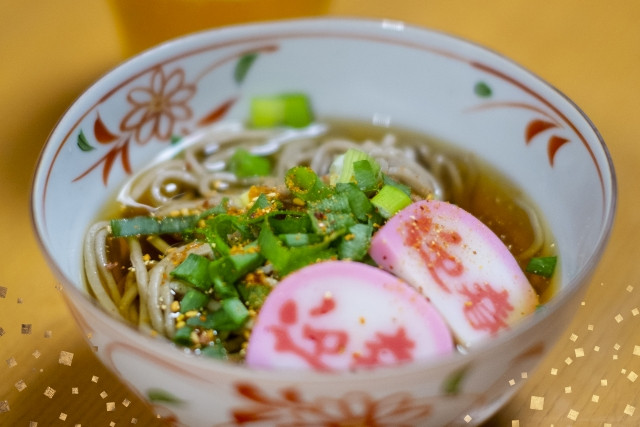
Toshikoshi Soba is eaten on New Year’s Eve night to bring good luck. It is said the tradition started in the Edo period when people ate soba with the hopes for “longevity because soba noodles are thin and long”, and “to cut away the misfortunes of the year because soba noodles are easily cut”.
It is a dish that brings good luck and combines the characteristics of soba with the desire to have a peaceful year. It is said that it is bad luck if you do not finish eating before the New Year, so be sure to finish in time.
Seven Herbs Porridge - 七草粥 (Nanakusagayu)
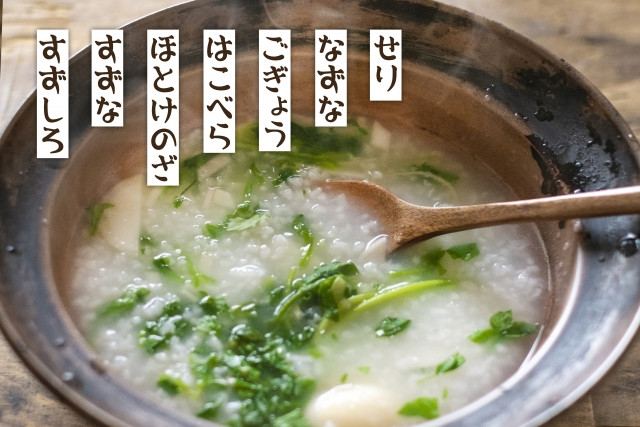
Nanakusagayu is a porridge cooked with 7 spring herbs that is eaten on the 7th day of the New Year, January 7th. January 7th is also one of the 節句 (Sekku) days that represent the changing of seasons in ancient Japan. The 7th day of the 1st month is 人日 (Jinjitsu), aka七草の節句 (Nanakusa no Sekku) or “Festival of Seven Herbs”.
The 7 spring herbs used to make Nanakusagayu are:
- せり (Seri) - Water Dropwort
- なずな (Nazuna) - Shepherd’s Purse
- ごぎょう (Gogyou) - Cudweed
- はこべら (Hakobera) - Chickweed
- ほとけのざ (Hotokenoza) - Nipplewort
- すずな (Suzuna) - Turnip
- すずしろ (Suzushiro) - Daikon Radish
Learn about other traditional Japanese New Year’s food here.
To Close
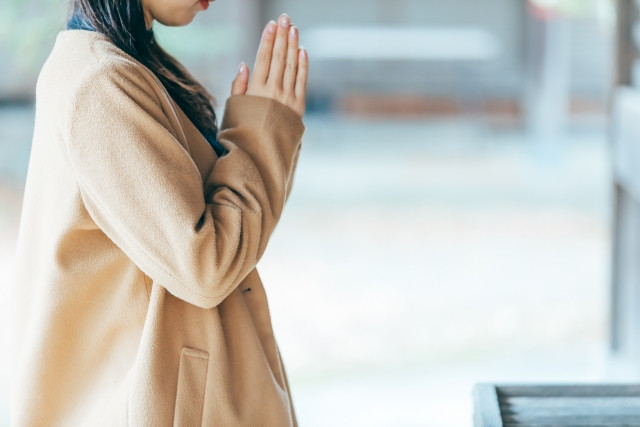
The Japanese New Year is one of the most important events in Japan with long-standing traditions and a lesson in history itself. This all-important annual event also contains people’s wishes for a happy and good new year. If you are interested in Japanese culture and tradition, try experiencing Japanese New Year with traditional New Year’s food and Hatsumode.

.jpg)































